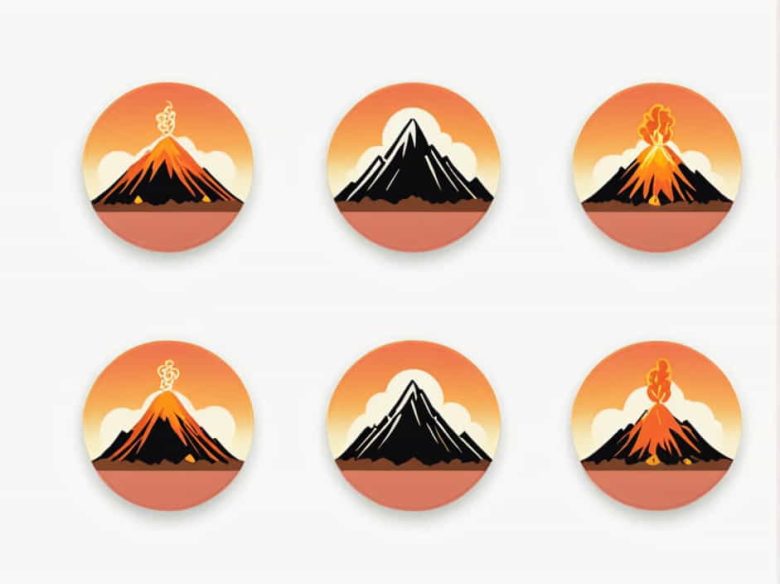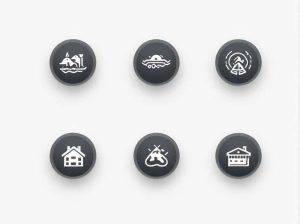Volcanic eruptions are powerful natural disasters that can cause widespread devastation. Being prepared can make the difference between life and death. Whether you live near an active volcano or are traveling to a volcanic region knowing what to do before during and after an eruption is crucial.
This guide provides essential volcanic eruption preparedness tips to help you stay safe and minimize risks.
Understanding Volcanic Eruptions
What Causes a Volcanic Eruption?
A volcanic eruption occurs when magma gas and ash escape from beneath the Earth’s surface. The intensity of an eruption can vary ranging from slow lava flows to violent explosions that send ash and debris into the air.
Types of Volcanic Hazards
A volcanic eruption can cause multiple hazards including:
- Lava flows – Slow-moving but destructive rivers of molten rock.
- Ashfall – Volcanic ash can cover large areas affecting air quality and visibility.
- Pyroclastic flows – Extremely hot fast-moving clouds of gas and debris.
- Lahars – Mudflows caused by volcanic activity mixing with water.
- Toxic gases – Sulfur dioxide and carbon dioxide can be deadly in high concentrations.
Understanding these hazards can help you prepare for a volcanic eruption effectively.
Before a Volcanic Eruption: How to Prepare
Preparation is key to surviving a volcanic eruption. Here are steps to take before an eruption occurs.
1. Stay Informed
- Check volcanic activity reports from local authorities or geological agencies.
- Learn about evacuation routes and emergency shelters in your area.
- Sign up for emergency alerts on your phone or through government websites.
2. Create an Emergency Plan
- Establish a family communication plan in case you get separated.
- Designate a safe meeting place outside the danger zone.
- Plan multiple evacuation routes in case some roads are blocked.
3. Prepare an Emergency Kit
Your volcano emergency kit should include:
✔️ N95 masks to protect against ash inhalation
✔️ Goggles to shield your eyes
✔️ Battery-powered radio for updates
✔️ Flashlight with extra batteries
✔️ First aid kit and necessary medications
✔️ Non-perishable food and bottled water for at least 3 days
✔️ Important documents in a waterproof bag
4. Protect Your Home
- Keep doors and windows sealed to prevent ash from entering.
- Reinforce roofs and gutters as heavy ash accumulation can cause collapses.
- Clear nearby drains to prevent lahars from flooding your property.
5. Have an Evacuation Plan
- Know where the nearest volcano evacuation centers are located.
- Keep your vehicle fueled and ready for a quick escape.
- Practice evacuation drills with your family.
During a Volcanic Eruption: Staying Safe
When an eruption begins act quickly and follow safety guidelines.
1. Follow Official Instructions
- If authorities order an evacuation leave immediately.
- Stay tuned to radio broadcasts or emergency alerts for real-time updates.
- Do not attempt to watch the eruption up close—it can be deadly.
2. Protect Yourself from Volcanic Ash
- Wear an N95 mask or cover your nose and mouth with a damp cloth.
- Stay indoors if possible with windows and doors closed.
- Avoid driving as ash can reduce visibility and damage engines.
3. Watch Out for Falling Debris and Lava
- Move to higher ground if lahars or pyroclastic flows are expected.
- Avoid river valleys and low-lying areas where mudflows may occur.
- Seek sturdy shelter to protect yourself from ashfall and projectiles.
4. Stay Away from Volcanic Gas
- Volcanic gases like sulfur dioxide can be toxic and cause breathing problems.
- If you smell a strong sulfuric odor evacuate to a well-ventilated area.
After a Volcanic Eruption: Recovery and Safety
Once the eruption subsides dangers still exist. Here’s what to do after a volcanic eruption.
1. Wait for the All-Clear Signal
- Do not return home until authorities declare it safe.
- Watch out for secondary eruptions or aftershocks.
2. Clean Up Volcanic Ash Safely
- Wear a mask and goggles when cleaning ash-covered areas.
- Use a damp cloth or broom instead of dry sweeping to prevent inhalation.
- Remove ash from rooftops to prevent collapses.
3. Check for Damage
- Inspect your home for structural damage or gas leaks.
- If you experience power outages use flashlights instead of candles to avoid fire hazards.
- Boil or filter water if contamination is suspected.
4. Seek Medical Help if Needed
- If you experience breathing difficulties from inhaling ash seek medical attention.
- Wash off any ash or volcanic debris that has come into contact with your skin.
5. Help Others in Need
- Check on neighbors especially the elderly or disabled.
- Donate supplies to local relief efforts if possible.
Being prepared for a volcanic eruption can save lives. By understanding volcanic hazards creating an emergency plan and following safety measures you can minimize risks and protect yourself and your family.
Stay informed act quickly and prioritize safety before during and after an eruption. Preparedness is the key to survival in any natural disaster.

